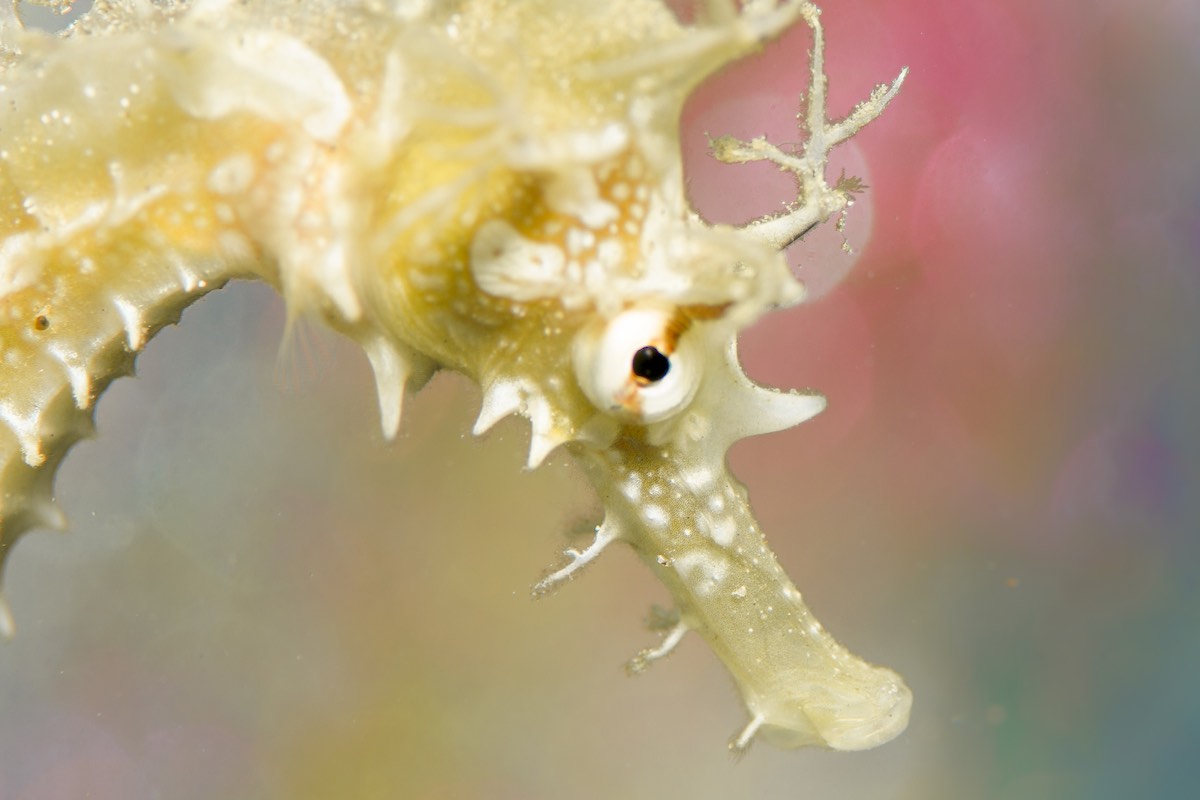The Seahorse is Ocean Father of the Year
Published by Ocean Conservancy
This time of year, we celebrate all of the dads out there—ocean fathers included! And while there are some similarities in parental responsibilities under the sea, there are some noticeable differences (for example, ocean dads need to protect their offspring from being eaten, but don’t need to worry about making sure homework is finished or teeth are brushed).
Some ocean dads have a particularly unique parental role: pregnancy. Male members of the Syngnathidae family, which includes seahorses, pipefishes and seadragons, take the reins when it comes to reproduction. It’s is the only family in the animal kingdom where the males become pregnant, which is why they claim the title of Ocean Fathers of the Year.
For the seahorse, the road to fatherhood starts with romance. Males and females participate in an elaborate courtship ritual, which involves the pair moving together while changing color and intertwining their tails. They repeat this “dance” over many days, and it serves as a way to assess each other’s suitability as a mate and to strengthen the pair’s bond. Because females rely on males to carry their offspring, they choose their mate carefully, and can be more attracted to males with more elaborate coloring or ornaments.


Once the pair decides to mate, the female uses her tube-like ovipositor to deposit her eggs into the male’s brood pouch. There, the males add their sperm, and the fertilized eggs nestle into the soft interior of the brood pouch. Depending on the species, they can carry up to 2,000 at a time. Over the course of many weeks, seahorses males will provide nutrients to the offspring and protect them while they develop—just like in human pregnancies!
About a week before birth, the offspring hatch from their eggs and swim around within the brood pouch (this is when the seahorse’s stomach expands even more, making it look very pregnant). Then, the male will contract its stomach to expel teeny, fully-formed offspring (also known as fry) who are ready to take on the world.

Unfortunately, seahorse offspring are very susceptible to predators, so their odds of survival are low. As few as five in every 1,000 fry will survive until adulthood. That’s why they fertilize so many eggs at once—to increase the odds that at least a few will make it. And it’s also why immediately after birth, the female is ready to mate again, and the process starts all over again.
So congratulations to the seahorse, our egg-carrying, pregnancy-enduring Ocean Father of the Year!
Runner up: Pipefish. Seahorses and pipefish are in the same family and both species have males become pregnant. However, seahorses trump pipefish in the fight for Ocean Father of the Year because of their commitment to monogamy—once the males are pregnant, they will carry their young until they’re ready to hatch. Pipefish, on the other hand, will probably see the brood through—unless a bigger, sexier female comes along. If a male pipefish sees a better-looking female while pregnant, he is more likely to kill off some of his own eggs. He’s also more likely to give more resources to eggs from bigger females than to eggs from smaller ones.
Looks like pipefishes could learn a thing or two from seahorses!
Sign up for our emails!
The post The Seahorse is Ocean Father of the Year appeared first on Ocean Conservancy.
Read the full article at: https://oceanconservancy.org/blog/2019/06/14/seahorse-ocean-father-year/


